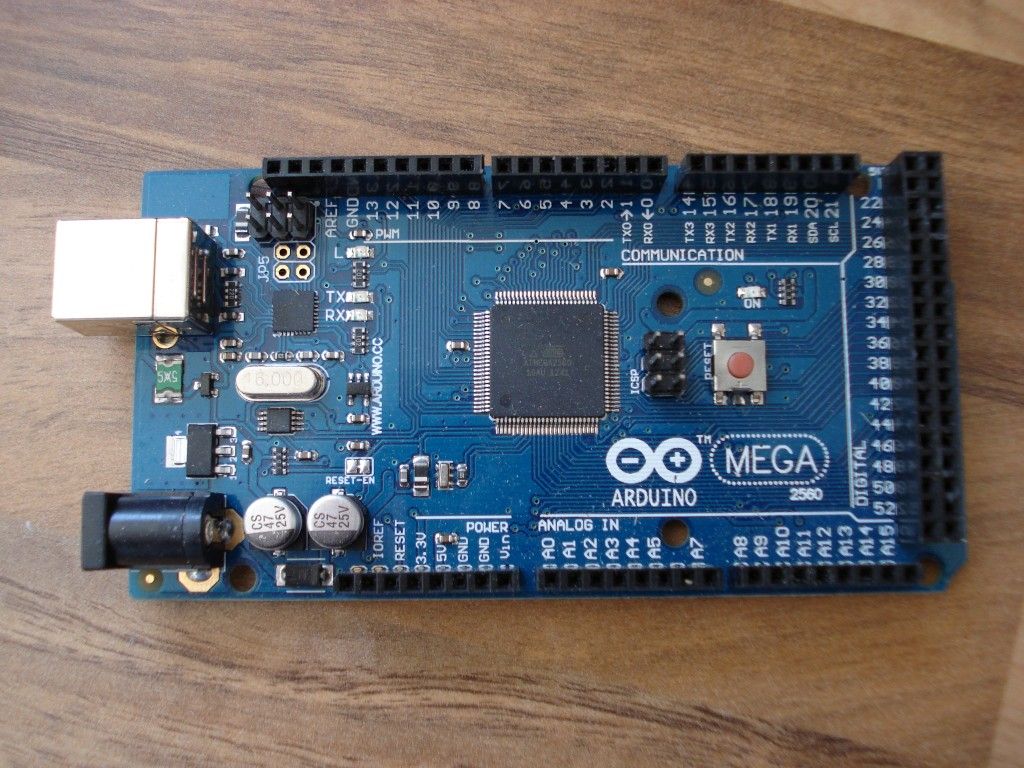Summary of Arduino Hardware PWM for stepper motor drives
This article explains how to use Arduino's hardware PWM (Pulse Width Modulation) to control stepper motors, contrasting it with PWM control of servos. It covers PWM basics, using the TimerOne Arduino library to generate signals, and controlling servo angles by varying duty cycles at fixed frequency. For stepper motors, PWM frequency is varied at a fixed duty cycle to control speed. The method improves smoothness and speed for a laser cutter’s Z-axis stepper motor but lacks step counting, necessitating external feedback like limit switches for position control.
Parts used in the JustAddSharks Project:
- Arduino microcontroller (e.g., Arduino Pro Mini)
- Stepper motor
- Stepper motor driver (providing step and direction inputs)
- TimerOne Arduino library
- Laser cutter Z-axis mechanical components
- End stop switches (limit switches)
There are a lot of tutorials online detailing the hardware PWM features of the arduino and how it relates to servo motor control. This instructable will show you how to use the hardware PWM to control a stepper motor instead. We’ll start with the basics of PWM, show briefly how it relates to servo motors and then show the differences for use with stepper motors.

Step 1: Pulse Width Modulation

- Amplitude – The amount the signal changes between On and Off states
- Frequency – The number of times the signal repeats in a given time frame
- Duty Cycle – The proportion of On time to Off time usually expressed as a percentage
In these digital systems the amplitude is fixed between 0 and 1, between 0V and VCC. In my testing this was +5V.
In it’s simplest form a PWM square wave can be created with a few lines of code. The following code would produce a signal with a 1 second Frequency and a 10% duty cycle. This would be functional but the Arduino would be dedicated to producing this signal the whole time and would not do anything else. This is why the blink without delay example is so important to learn.
digitalWrite(IOPin, HIGH);
delayMicroseconds(100);
digitalWrite(IOPin, LOW);
delayMicroseconds(900);
With a software generated signal any variation in the code execution time can cause variations in the output. Conditional statements may not execute on every loop so it is hard to guarantee that each loop will take exactly the same amount of time. Modern microcontrollers have dedicated hardware modules to generate a code independent square wave. Values for Duty cycle and Frequency are written to registers within the controller and the hardware generates the appropriate signal on the desired output pin.
The registers for the Hardware PWM module can be written to directly as described here, but the joy of the Arduino environment is that somebody is likely to have written a library to simplify that process. The TimerOne library provides control over the HardwarePWM module connected to timer 1 (aptly). This library has easy functions for setting the frequency and duty cycle of the square wave being generated
- pwm(pin, duty, period) – Generates a PWM waveform on the specified pin.
The minimum freqeuncy supported by the library is 1ms and the maximum is 8.3s. The duty is specified as a 10 bit value, between 0 and 1023, and this correlates to the 0% and 100% values respectively.
Step 2: PWM for servo control

For servo control the Frequency of the signal is fixed, and the duty cycle varies.
Servos accept a common control signal, a square wave with a repeat frequency of 20ms and an on period of 1ms (5%) to 2ms (10%). It is the width of the on pulse that indicates what angle the servo should be at.
Here is the code to set up the two extreme signals using the Timer one libraries
- pwm(9, 51, 20000);
- pwm(9, 102, 20000);
You’ll note that using this method there are only 50 steps between the minimum angle and the maximum angle, this is sufficient resolution for most basic systems. There are better methods for controlling the servo to provide more accurate resolutions but they are beyond the scope of this instructable.
Step 3: PWM for stepper motors

For stepper motor driver control the duty cycle can be fixed and the Frequency varied.
The stepper motor driver expects a series of input pulses to move the motor to any given angle. The driver moves the motor one step for each input pulse. The direction of the motor is set by the second input.
Here is the code to set up the two different speeds using the Timer one libraries
- pwm(9, 512, 20000);
- pwm(9, 512, 40000);
A smaller value for the period produces a higher frequency which gives more pulses per second and makes the motor turn faster. Changing the period while the motor is running can produce acceleration in the motor which will help the stepper reach it’s maximum top speed.
Step 4: Putting It Into a Project

I discovered all this information with a goal in mind. I wanted to drive the stepper motor connected to the Z axis of my laser cutter. Manually generating a software PWM signal on an Arduino pro mini just wasn’t making the axis move fast enough and the occasional jitter in code had a habit of making the motor stall. I needed this clean output signal to drive the motor faster and more reliably, the results were pretty promising.
I have another project in development that will use this same control method, in that system the user will provide the feedback and will stop the motor when it is in the correct position. This method is not really suitable for controlling the laser cutter as it traces out a design so I will move on to look at the next thing, expect more ibles in the future.
